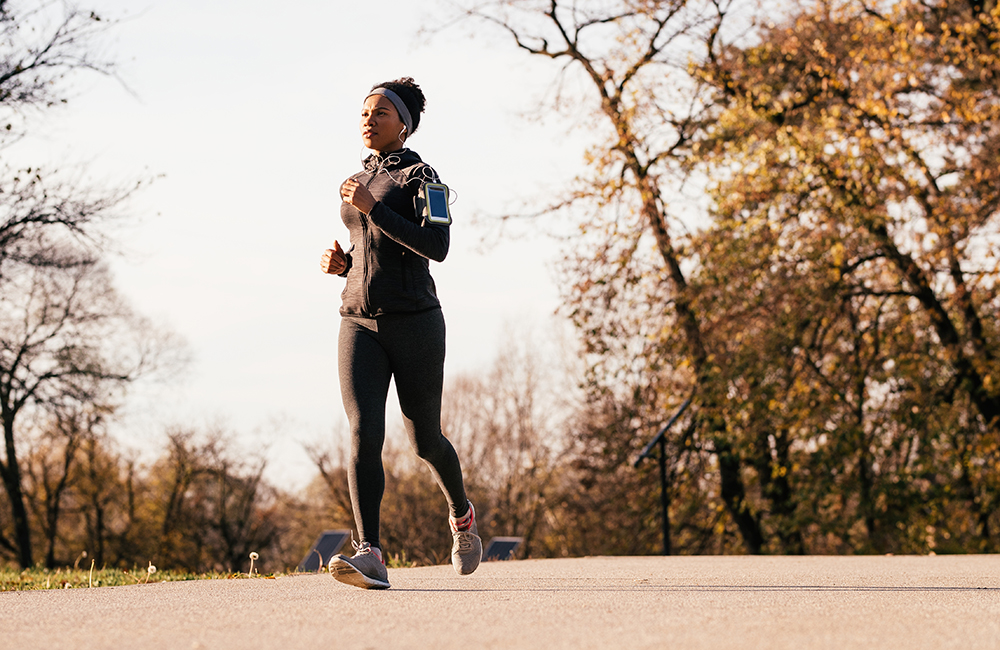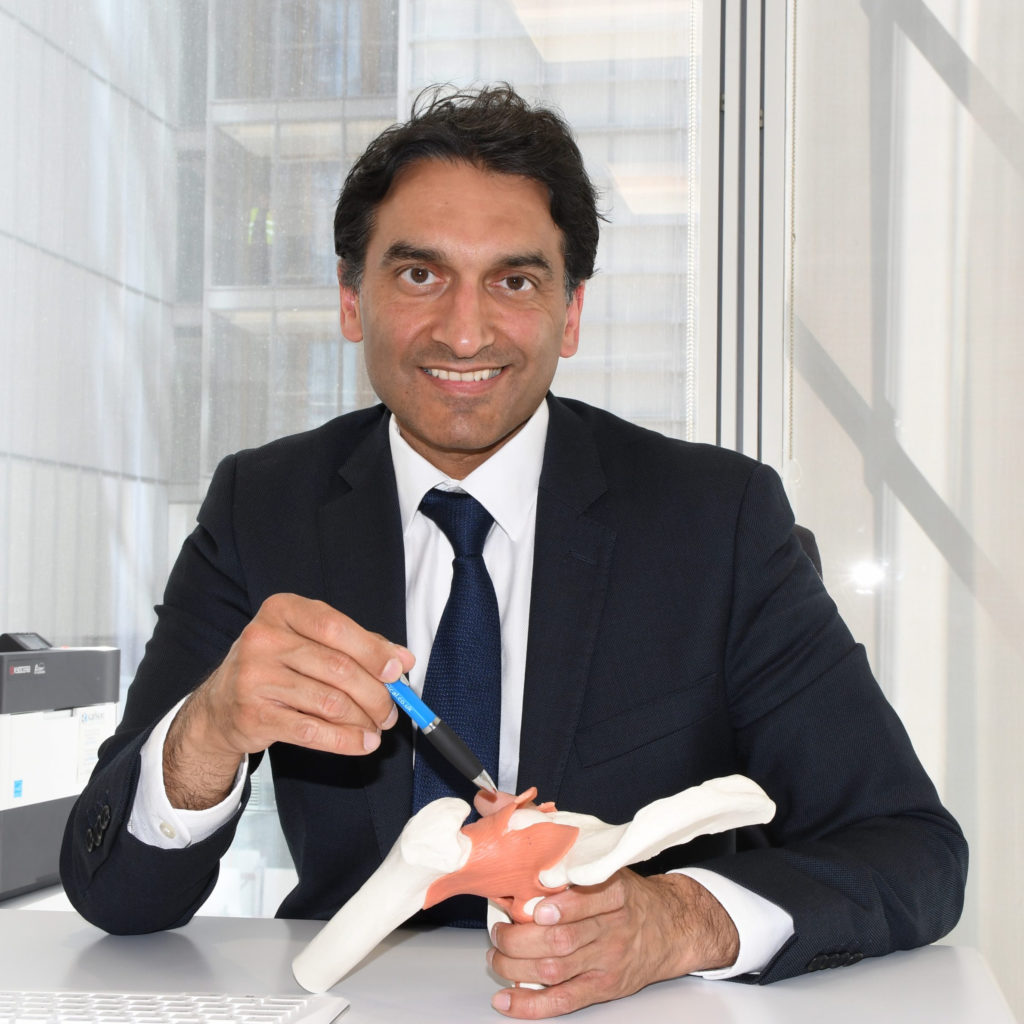BLOG
Common Running Injuries – Can they be Prevented?
By Mr Vipin Asopa, Consultant Hip & Knee Surgeon
November 2022

You’ve decided that you want to start running.
The first thing you are likely to do is to buy a pair of running trainers. There is lots of information out there regarding how to find the right pair of running shoes that work for you and your running style and needs. Runners World test a range of beginner-friendly running shoes including Asics, Reebok, Hoka, Nike and New Balance, and explore the benefits of each of them in this article.
Running clothes may be your next consideration.
You will then plan your route, or maybe find a local running club to join. You may also have your sights set on a particular race that you and your friends want to run in.
Maybe a smart watch? Always good to track your times and your distance.
You’ve had a good nights sleep and something to eat. You’re about ready to go. You get your water bottle ready and you’ll likely do some stretches.
And then you’re ready to set off on that first run……Or are you ready?
Before you start out on your first run, could stopping to consider possible injuries and their prevention be the logical next step? In many sports, including running, the first time most people consider injury prevention is after an injury has been sustained.
THE FOUNDATION TO INJURY PREVENTION IN RUNNERS
Whether you have considered it or not, you have taken the first steps of injury prevention with the above actions.
- Running trainers are designed with injury prevention in mind.
- Planning your route to make sure you are running on suitable terrain for you.
- A smart watch to time your speed and distance and make sure you are not going too far, too soon.
- Drinking water helps to keep your body and muscles hydrated.
- Stretching before you set off on your run.
- Nutrition, a healthy balanced diet and fluid.
- Rest and sleep are important for your body to recover and repair after runs.
OTHER FACTORS TO CONSIDER FOR INJURY PREVENTION
And then let’s now explore beyond this with some other ways to consider injuries right from the beginning. Is there anything further you can actively do to prevent running injuries? Here is a list of considerations:
- Have you got any pre-existing injuries or conditions such as arthritis that could affect your running abilities? Is there anything you can modify to make sure you allow for this injury?
- When planning the route, did you consider the terrain? It is suggested that, “As a rule, healthy runners should always vary their running surfaces to improve strength and balance, and to help avoid injury…If you frequently run the same route, reverse direction every other run. That will adjust for any slant in the road, so you’ll be working both sides of your body equally. Adjusting to a new surface takes time. Remember, if you’re testing out new terrain, you need to ease into it gradually.” [verywellfit.com]
- Have you planned your running schedule? Don’t overtrain – it can be tempting to see how far you can run, and how quickly! But is that what’s best for you? Try building up to this. Experts suggest, “As a beginning runner, your main priority is to run consistently and allow your body to get used to running. This probably means running 2-3 days per week for 1-4 miles. As a newbie, don’t increase your mileage every week. Keep it the same for 3-4 weeks at a time to allow your body to adjust. When you’re comfortable, then you can add mileage.” [https://strengthrunning.com]
- Are you running in the right way? Consider your running form and your posture. Consider specialist assessment or advice from running club members.
- What other considerations are there for runners? Physiotherapist Marco Bevellino says, “It’s possible to minimise the chances of running injuries with extra stretching, strength & conditioning exercises, sports massage and preventative physiotherapy. Free weight compound exercises are a great choice. These exercises use most of the leg muscles and at the same time are quite demanding. They are extremely beneficial for building up strength and minimising the risk of running-related injuries.” [Q Sports Physio]
SOMETIMES INJURIES WILL STILL OCCUR
It’s important to take these steps to do everything within your control to avoid injury. But the reality is that we have minimised the risk, of injuries, but not completely avoided them. Some of the most common running injuries occur in the knee.
- Overuse injuries such as runners knee. Even though you are likely to be increasing your running distance and speed steadily, there is still the possibility of overuse injuries happening.
- The fat pad at the front of the knee can become inflamed. This becomes worse when you run either up-hill or down-hill.
- Iliotibial band syndrome is inflammation and pain on the outside of the knee. It can cause pain in the hips (such as lateral hip, trochanteric bursitis or pain. This is a common problem).
- Meniscal injury – this could be a degenerative tear, or it could tear itself. If it continues to cause a problem, surgery may be needed.
- Cartilage damage
- Stress response and fractures – you will notice this because of pain when you run which gets worse, but settles with rest.
And then there are the injuries that are completely outside our control.
- Injuries sustained from a fall. These can cause structural damage. For example falling onto the knee cap could cause bruising and soft tissue injury. It is also possible to get damage to the cartilage behind the knee cap. A stumble or twisting injury could damage ligaments in the knee (such as the anterior cruciate ligament or collateral ligaments). If you are unlucky, you could sustain a fracture which is a break in the bone.
- Or you may have a specific underlying condition that you are unaware of until it is aggravated from running.
By being equipped with the knowledge of possible running injuries and how to reduce the chances of them, you can then focus on enjoying your running.
If you do sustain a running injury or notice pain when running or pain at night, and symptoms do not respond to conservative treatment, book an appointment to see a specialist. You will be asked questions and examined. Investigations such as x-rays and an MRI scan may be required to help with diagnosis and planning treatment.

ABOUT THE AUTHOR
Mr Vipin Asopa, PhD, FRCS (Tr & Orth), MBChB, BSc (hons)
Mr Asopa is a Specialist Consultant Hip and Knee Surgeon in London, with a particular focus on hip pain, knee pain and sports injuries. Mr Asopa performs numerous surgical procedures including hip and knee joint replacements, arthroscopy as well as treating arthritis, ligament injuries, trochanteric pain and more.
To book an appointment with Mr Asopa:
Call: +44 (0) 794 319 1592 | Email: admin@ortho-surgery.uk